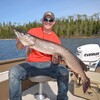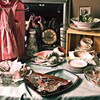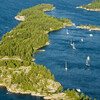
Exploring Algoma Ontario's Famous Ice Caves

Editor's Note: Always check weather and ice conditions and proceed at your own risk before adventuring out into the winter landscapes. Dress appropriately and bring an emergency preparedness kit. Ice formations are often best viewed at safe distance from shore.
The only way to enjoy winter is to embrace it, and Algoma Country is the place to do so! If you dress for the occasion, you will enjoy the great white outdoors! With a shout-out from the New York Times travel section, exploring Algoma’s ice formations has become all the rage.
A caution note: you must know the ice conditions and where it is safe to go.
- Learn all about ice safety before you go (Canadian Red Cross)


When is the Best Time to See Ice Caves?
The best ice conditions are when Lake Huron and Lake Superior are almost completely frozen over. However, this is not guaranteed every winter. Many weeks of deep cold weather are needed for the big bodies of water to freeze over. According to one study, cited on Wikipedia: “The increase in the lake's surface temperature may be related to the decreasing ice cover. If trends continue, Lake Superior, which freezes over completely once every 20 years, could routinely be ice-free by 2040”.

What are Ice Formations and Ice Caves?
There are many types of ice formations to enjoy in Algoma during winter. Many ice formations are frost flowers, pancake ice, ice circles, Stalactite and Stalagmite icicles, ice caves, frozen walls, blowholes, ice spikes, ice diamonds, ice balls, hoar frost, frozen waterfalls, ice encasements, and ice ridges.
New ice formed quickly with plummeting temperatures creating an ice garden called frost flowers. Here's how NPR explains it:
"The air was extremely cold and extremely dry, colder than the ocean surface. When the air gets that different from the sea, the dryness pulls moisture off little bumps in the ice, bits of ice vaporize, the air gets humid—but only for a while. The cold makes water vapour heavy. The air wants to release that excess weight, so crystal by crystal, air turns back into ice, creating delicate, feathery tendrils that reach sometimes two, three inches high, like giant snowflakes. The sea, literally, blossoms."
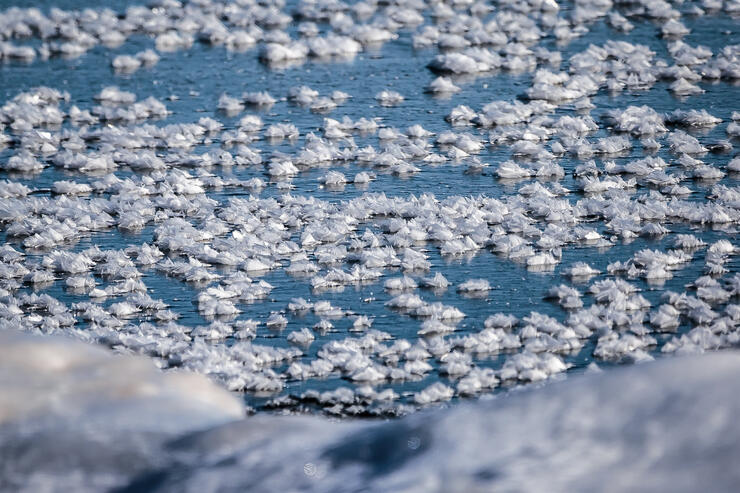
These images were taken at Batchawana Bay in early January 2019. It is such a beautiful site to see these frost flowers.
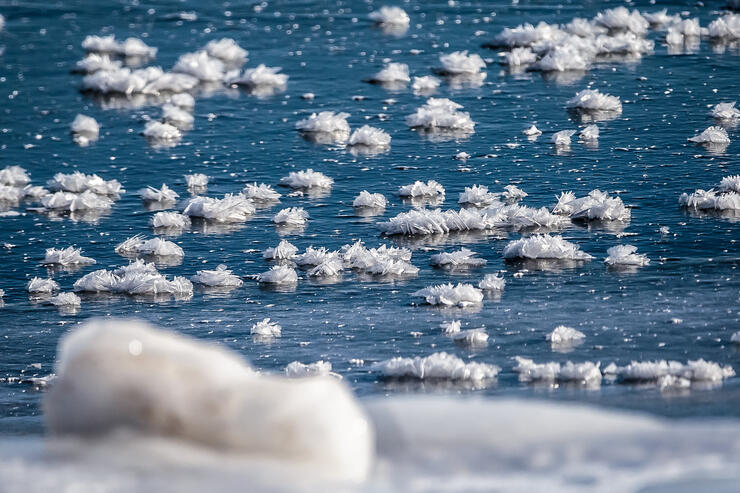
Pancake ice looks like ice circles, and they form by ice on the water breaking up and swirling forming ice disks. They are often found in areas where there is moving water. These images were taken at Batchawana Bay in early January 2019. It is such a beautiful site to see these frost flowers.

Ice circles form in the bends of rivers or areas with a current. As a layer of ice is formed over the water, the current of accelerating water underneath creates a "rotational shear," breaking off a chunk of ice and twisting it until it forms a circle.

This portion of a dock in Batchawana Bay is an example of a formed ice circle.

Stalactite and Stalagmite ice formations occur inside ice caves. Melting and refreezing water create icicle formations from the top and bottom of the ice cave.

Ice caves are formed by wave action bashing against the rock walls and inlets along the shore of Lake Superior. Plummeting temperatures freeze the layers of water washing up and over the rocks. Lake Superior’s wave action also pushes in ice towards the shores, creating ridges that can get quite high and large, and also creating little caves and crevasses.


Frozen walls of ice are found along the shorelines of Lake Huron and Lake Superior in winter. These walls are big chunks of ice from wave action along the walls of rock.


Blowholes are areas where the wave action shoots up through an opening in the ice forming little cones that can look like a snow volcano. These can be quite dangerous if you are walking because snow may cover the hole and you will fall in. Blowholes can be found anywhere along Lake Huron and Lake Superior.

Ice spikes are formed in turbulent areas where ice is pushed, and pulled, by underlying wave action creating very uneven and sharp ice.

Often found on the shorelines are what I like to call ice diamonds. They are little nuggets of ice that are clear and shiny. They sparkle in the full sun. These ice diamonds were found up at Coppermine Point.


Ice balls are very difficult to walk on and can be found along shorelines where there has been a lot of wave action and quick freezing temperatures. These were found along the shore at Whisky Bay, St. Joseph Island.

Hoar frost is a crystalline frost formed from water vapour in the air. It is quite pretty as it turns the landscape into a winter wonderland, coating everything in a thin layer of white frost.

Algoma has many frozen waterfalls. Gros Cap has a beautiful ice structure for climbing most years. It is a frequent spot for ice climbers.
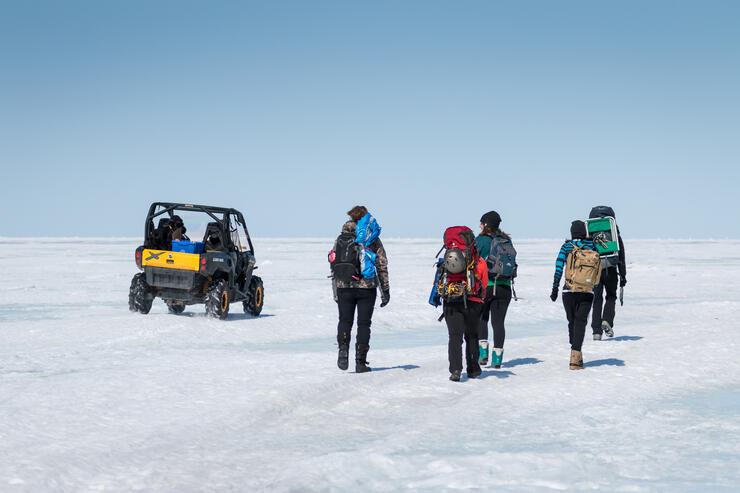

Ice encasements are trees, plants, buildings or anything in the path of wave action and freezing temperatures. They create beautiful works of art!


Ice ridges are always present on the Great Lakes due to the constant pushing and pulling of the ice. The ice buckles and cracks, forming a ridge of ice. These are very dangerous to the unsuspecting snowmobiler. They can quickly form at any time with the shifting of the ice. Sometimes you might even encounter a cute mink running in amongst the ridges fishing for its next meal.



Proceed With Caution When Exploring Ice Caves and Formations
Every winter is very unpredictable, and ice formations are dependent on the weather patterns in Algoma. Many of the ice formations discussed are not always present or may form earlier or later in the year. The last time the Great Lakes froze completely over was in 2014. Most years Lake Superior is only 40% to 95% covered in ice.
- To see the latest ice conditions click here (Government of Canada)


One of my favourite places to go for ice caves is Saw Pit Bay, Lake Superior. It is just past Pancake Bay and is close to Highway 17 N, so you do not need to walk far to access this location. It is about an hour’s drive north of Sault Ste. Marie, Ontario.


Being Prepared to Explore the Ice Caves
It is important to dress appropriately when venturing out in search of these ice formations. Dress in layers: a hat that covers your ears to protect them from the cold winds, winter boots with extra winter socks, heavy waterproof gloves, winter snow pants and winter coat, and to prevent slipping on the ice, ice cleats to put on the bottom of your boots. These are a must when climbing along with uneven icy areas along the shorelines.
When you venture out onto the ice, after making sure it is safe, I recommend snowshoes even if there isn’t much snow on the ice. There may be pressure cracks in the ice, leaving a gap for your foot to fall through. This has happened to me. It's quite scary and would not have happened if I would have had snowshoes on.


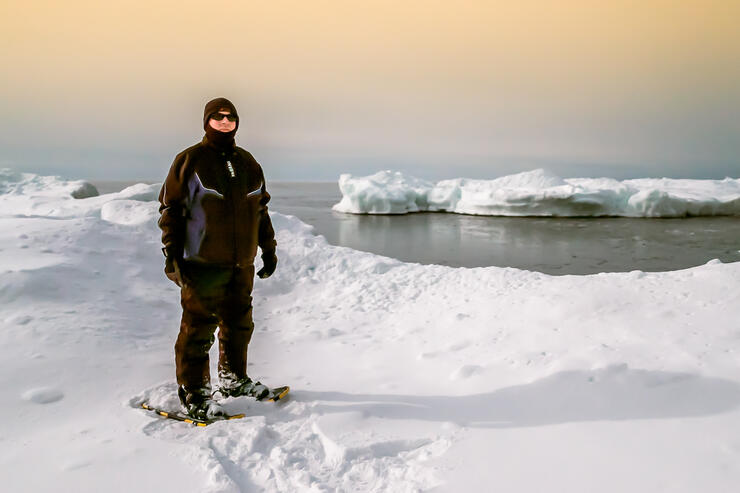
In the winter, hotels and restaurants north of the Sault are limited.

East of the Sault has many more places for gas and food. One of my favourites to eat is at Bobber’s Restaurant in Bruce Mines.
For more information about the Algoma Area, and places to stay and eat here is the Algoma Country Travel Guide.

Related Links
Recommended Articles

The Group of Seven in Algoma

9 Facts to Know about the Agawa Canyon Tour Train



